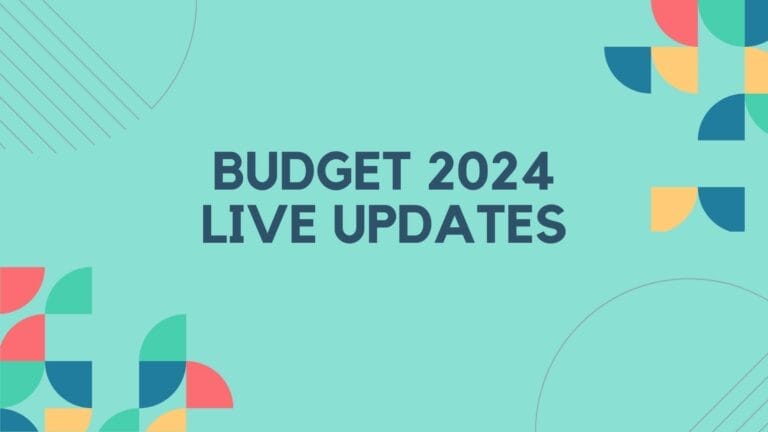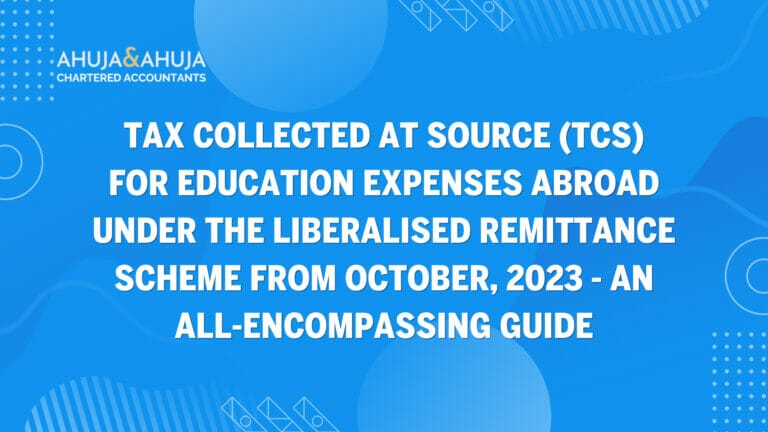Income Tax on Withdrawals from EPF
The Employees’ Provident Fund (EPF) stands as a pivotal component of retirement planning for salaried employees in India.
Governed by the Employees’ Provident Fund Organisation (EPFO), this scheme not only helps employees save a portion of their salary every month but also ensures they can access this fund upon retirement, or when they urgently need it under specific circumstances.
Importance and Basics of EPF
EPF is designed as a retirement benefit plan that applies to all salaried employees, making it a critical tool for long-term savings.
Every employee contributes 12% of their basic pay each month, matching contributions being made by the employer, totalling a significant 24% contribution monthly.
This pooled fund accumulates over the years, enhanced by interest, and forms a substantial retirement corpus.
Contribution Details
Here’s how the contributions break down:
- Employee contribution: 12% of the basic salary goes into EPF.
- Employer contribution: Equally, 12% of the basic salary is contributed; however, out of this, 8.33% is directed towards the Employees’ Pension Scheme (EPS), and the remaining 3.67% is credited to the EPF account.
Contributions to the EPF accounts are not just a financial obligation; they provide a tax relief under Section 80C of the Income Tax Act.
Each fiscal year, employees can claim a deduction for their EPF contribution, making EPF a tax-efficient investment.
Interest Rates and Benefits of EPF
For the fiscal years 2024-25 and 2023-24, EPFO has declared an interest rate of 8.25% per annum. This interest is calculated on the accumulated balance in both the employer and employee contributions.
The interest earned is also tax-free, which adds to the allure of the EPF as a highly beneficial savings scheme.
Budget 2023 Update on TDS Rates
Significantly, the latest financial updates under Budget 2023 have seen a reduction in Tax Deducted at Source (TDS) rates from 30% to 20% on the taxable portion of EPF withdrawals in instances where no PAN is provided.
This policy revision aims to lessen the immediate financial burden and tax implications for withdrawals made without a PAN.
Importance of PAN and Linkages in EPF
It is important to remind EPF members to keep their PAN updated and linked to their accounts to benefit from reduced TDS rates and to facilitate seamless online transactions, including online claim submissions.
Eligibility for EPF Withdrawal
Understanding when and how you can withdraw from your EPF account is crucial for making informed financial decisions. Below are the scenarios under which an EPF member can withdraw funds:
Full Withdrawal Conditions
- Upon Retirement: Members can withdraw the full amount after reaching the retirement age of 55 years.
- Pre-retirement: At the age of 54, one can withdraw up to 90% of the EPF balance.
- Post unemployment: Members can withdraw:
- 75% of their EPF funds after one month of unemployment.
- The entire amount after two months of unemployment.
Simplified Online Withdrawal
Withdrawals have been made simpler with the integration of Aadhar-linked Unified Account Number (UAN). Employees can now initiate withdrawal requests online without needing the employer’s consent once their Aadhar is linked and verified.
Reasons for Partial Withdrawal of EPF
EPF also allows for partial withdrawals under specific circumstances, which can be a great help during times of financial need without completely depleting the retirement savings.
Here are some situations where partial withdrawals are permitted:
- Medical Purposes: For treatments of severe illnesses involving the member or immediate family.
- Education: To finance education for oneself, spouse, or children post matriculation.
- Marriage: Withdrawal is allowed for the marriage of the member, their siblings, or their children.
- Property Purchase/Construction: Members can withdraw for buying land or a house, or for the construction of a property.
- Home Loan Repayment: Members can utilize EPF funds to repay their home loans.
- Renovation: Withdrawal for major repairs and alterations to the existing home can be made after 5 years of the house purchase.
These withdrawals are subject to various terms and conditions, like years of service and limits on the amount that can be withdrawn, which need to be checked on the official EPFO portal or through platforms that help track EPF status and updates.
Initial Overview of Tax on EPF Withdrawal
Understanding the tax implications on your EPF can significantly impact your financial planning. Here’s a brief overview:
- Employee’s Contribution: The amount you contribute is not taxable upon withdrawal.
- Interest on Employee’s Contribution: It is taxed as ‘Income from Other Sources’.
- Employer’s Contribution & Interest: This portion is taxable under the ‘Income from Salaries’.
However, tax rules vary greatly based on the duration of holding and other factors, which we will cover in more detail in the following sections of our article.
Detailed Tax Rules on EPF Withdrawal
Tax liability on EPF funds can vary significantly based on several factors, including the duration of the fund held and the reasons for withdrawal. Let’s explore these circumstances and their tax implications:
Tax on EPF Withdrawal Before Completing 5 Years of Service
- General Rule: If you withdraw your EPF balance before completing 5 years of continuous service, it will be taxable in the year of withdrawal.
- TDS Application: Tax Deducted at Source (TDS) will be deducted at 10% if the withdrawal amount exceeds Rs. 50,000, provided your PAN is linked. Without PAN, TDS may be deducted at a higher rate.
- Exceptions: No TDS is deducted if:
- The total withdrawal is less than Rs. 50,000.
- The service is terminated due to reasons like ill health, discontinuation of business by the employer, or other reasons beyond the employee’s control.
Tax on EPF Withdrawal After 5 Years of Service
Withdrawals after 5 years of continuous service are exempt from tax under the Income Tax Act. This rule underscores the intent of the EPF as primarily a long-term retirement planning tool, encouraging employees to preserve their fund until retirement or close to it.
Special Situations
- Temporary Employees: Contributions made during periods of temporary employment are included in the 5-year calculation only from the date they become permanent employees.
- Unrecognized EPF: Withdrawals from an unrecognized provident fund are taxed irrespective of the period of holding because such funds do not have the approval of the Commissioner of Income Tax.
Strategies to Avoid TDS on EPF Withdrawal
Avoiding TDS on your EPF withdrawal is possible through a few strategic actions:
- Timely Transfer: When changing jobs, rather than withdrawing the EPF balance, transfer it to the new employer’s EPF account.
- Form 15G/15H: If your total income including the EPF withdrawal does not fall under the taxable limit, submitting Form 15G (for individuals below 60 years) or Form 15H (for senior citizens) can prevent the deduction of TDS.
Table of Taxability on Withdrawal of EPF
| Sl No | Scenario | Taxability |
|---|---|---|
| 1 | Withdrawal before 5 years amount < Rs 50,000 | No TDS, but taxable if above income exemption limit |
| 2 | Withdrawal before 5 years amount > Rs 50,000 | 10% TDS if PAN provided higher if no PAN |
| 3 | Withdrawal after 5 years | Exempt from tax |
| 4 | Transfer of PF from one account to another upon job change | No TDS, not taxable |
| 5 | Withdrawal due to ill health, discontinuation of business, etc. | No TDS, considered exempt regardless of duration of service |
The above guidelines provide clarity on how EPF withdrawals are treated under various circumstances, helping you navigate the often complex tax implications associated with these transactions.
Frequently Asked Questions (FAQs) on EPF Withdrawal
Where can I check the total TDS deducted on my EPF withdrawal?
You can review the TDS deductions on your EPF withdrawal from Form 26AS, which is available through the income tax e-filing portal. Form 26AS is linked to your PAN and reflects all TDS credits against your account.
Is it compulsory to be employed with one employer for 5 years to avoid tax on EPF withdrawals?
Not necessarily. The requirement is to complete 5 continuous years of service, which can be across multiple employers, as long as the EPF accounts have been transferred correctly from the previous employer to the new one.
Can I withdraw my EPF without TDS if I submit Form 15G/Form 15H?
Yes, if your total income including the EPF withdrawal does not exceed the taxable limit, submitting Form 15G (for individuals below 60 years) or Form 15H (for senior citizens) at the time of withdrawal will help in avoiding TDS.
How can I transfer my EPF account when I change jobs?
EPF transfer can be done online through the EPFO portal by filling out the transfer claim form. Ensure your UAN is active and verified with the KYC details, including Aadhar and PAN to facilitate a smooth transfer.
Quick Summary
We’ve covered various essential details regarding the taxation of EPF withdrawals, eligibility for withdrawal, and practical ways to manage and understand the tax implications:
- TDS rates have been adjusted in Budget 2023, reducing the tax load in no PAN cases and providing clarity on how withdrawals can be optimized tax-wise.
- It’s crucial to consider the duration of holding the EPF, as it significantly influences the tax treatment of withdrawals.
- Various conditions allow for tax exemptions and specific strategies like using Form 15G/Form 15H can prevent TDS on withdrawals under certain conditions.
- Always ensure to transfer EPF balances when shifting employers to maintain the tax benefits associated with continuous service.
Conclusion
Navigating the details of EPF withdrawals can be complex, but with proper understanding and strategic planning, it can be managed effectively to benefit from its provisions fully.
Whether you’re planning a withdrawal or trying to optimize your tax savings, staying informed and consulting with tax professionals can provide significant advantages.
Disclaimer
The materials provided herein are solely for educational and informational purposes. No attorney/professional-client relationship is created when you access or use the site or the materials. The information presented on this site does not constitute legal or professional advice and should not be relied upon for such purposes or used as a substitute for professional or legal advice.





